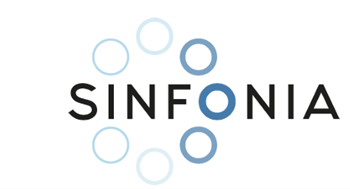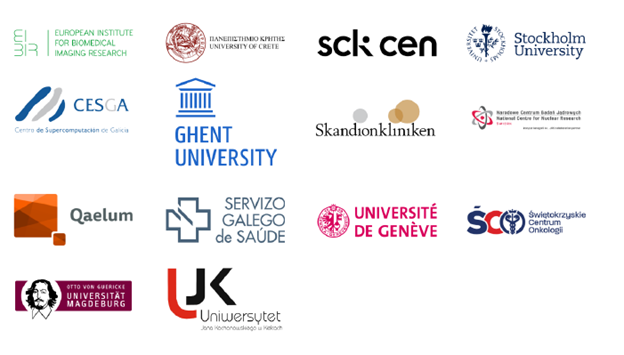
The SINFONIA project has set a new benchmark in radiation dosimetry and risk assessment, developing methodologies to provide precise, patient-specific dose estimations that enhance radiation safety and clinical decision-making. SINFONIA is proud to announce the release of its recommendations aimed at enhancing the safety and efficacy of medical procedures involving ionising radiation. These recommendations are the culmination of extensive research and development efforts from the SINFONIA project focused on personalised dosimetry and risk appraisal in diagnostic radiology, nuclear medicine (NM), and radiation therapy (RT). The recommendations provide a comprehensive view on the doses and risks from medical procedures and through this contribute towards advancing the safe use of modern, optimised and individualised diagnostic and therapy procedures. The recommendations are directed towards professionals working with ionising radiation or having to determine doses and assess risks from the medical use of ionising radiation.
Ionising radiation, while invaluable in medical diagnostics and treatment, poses significant risks to patients and healthcare personnel. It can damage cellular structures and DNA, increasing the risk of cancer and other health issues. Repeated or high-dose radiation exposure during medical imaging can lead to skin injuries, cataracts, and cardiovascular diseases. Pregnant patients and those undergoing frequent scans are particularly vulnerable, with potential long-term effects including growth retardation and congenital malformations in conceptuses.
AI tools have been developed for individual dose determinations from imaging procedures in diagnostic radiology and nuclear medicine. Prof. John Damilakis (SINFONIA Scientific Coordinator, University of Crete) highlighted that “The development of the web-based AI-powered i-Dose platform within SINFONIA represents a breakthrough in personalised radiation dose estimation, offering healthcare professionals an innovative tool to estimate patient doses and optimise X-ray procedures.” Significant advances have also been made in low-dose determinations from RT applications, including imaging procedures and the summation of dose contributions. Alexandru Dasu (WP7 leader, Skandion Clinic) pointed out that “to our knowledge this is the first personalised approach to identify and characterise all contributors to patient doses.”
The project’s developments have enhanced understanding of dose magnitudes and risks, and the potential for novel approaches to individualise dose and risk determinations.
SINFONIA’s commitment to education and training has bridged knowledge gaps in radiation safety, equipping medical professionals with cutting-edge tools and best practices to enhance patient care.
Important learnings have also emerged regarding the need for communication of risks to patients and the general public.
The results suggest distinct approaches for various patient categories. For patients suspected of a serious cancer diagnosis, effective radiation protection practices are essential to ensure that doses from diagnostic imaging are kept as low as reasonably achievable while maintaining image quality. For patients with a confirmed diagnosis, prioritising the delivery of the therapeutic dose to the target is crucial for long-term survival, with individual dose and risk assessments serving a secondary purpose to minimise treatment risks.
The production and administration of radionuclides pose additional risks for workers, the general public, and the environment. The impact on human and biota from the release of radiopharmaceuticals by hospitals were assessed by developing appropriate transport models. An AI-assisted computational system for real time staff dose assessment in NM was developed. The performance and accuracy of a computational framework based on Monte Carlo simulations for the evaluation of the exposure of caregivers, family members or staff when in close contact with nuclear medicine patients after injection with radiopharmaceuticals was evaluated. Suitable education on radionuclides, techniques, and procedures can effectively minimise radiogenic risks, ensuring a skilled labour force within the EU for the safe use of ionising radiation in medical applications.
Looking ahead, the integration of AI and machine learning (ML) in radiology holds promise for further reducing radiation doses and improving image quality. These technologies can optimise image capture, reduce the need for repeated scans, and enhance image processing and interpretation.
Prof John Damilakis concluded that “SINFONIA’s multidisciplinary approach has led to groundbreaking advancements, from AI-enhanced 3D dose distribution models to real-time extremity dose monitoring, strengthening radiation protection measures across medical fields.” The SINFONIA project's recommendations mark a significant step forward in the safe and effective use of ionising radiation in medical settings. By leveraging advanced technologies and fostering education, SINFONIA is paving the way for a safer future in medical imaging and treatment.
For more information about the SINFONIA project and its outcomes and to view the recommendations document, please visit https://www.sinfonia-appraisal.eu/.
About the SINFONIA project
The SINFONIA project ran from September 2020 to August 2024 and brought together a consortium of experts from 14 hospitals, universities, R&D centres, and private research companies from 8 European countries, incorporating multidisciplinary expertise in the fields of clinical dosimetry, radiotherapy, radiation biology, and artificial intelligence. The European Institute for Biomedical Imaging Research (EIBIR) in Vienna led the management of this project.
The SINFONIA project addressed critical shortcomings in radiation dosimetry and risk assessment within the medical field. Specifically, it sought to overcome the limitations of current methods for estimating personalised, organ-specific doses in X-ray imaging examinations, which are essential for accurate risk appraisal. The project also developed AI-powered tools, enabling personalised dosimetry in routine clinical practice, and novel methodologies for accurately estimating the dose received by patients from nuclear medicine (NM) procedures and radiation therapy (RT). SINFONIA conducted research on individual sensitivity to radiation and susceptibility to second malignant neoplasms (SMNs) for risk appraisal. Moreover, the project focused on evaluating radiation exposure for medical workers, caregivers, and the broader public and environment. Major results also include a repository for doses, images and non-imaging data; multidisciplinary education and training; and recommendations for diagnostic radiology, NM and RT.
By providing more accurate and personalised radiation dose estimates, SINFONIA contributes to:
Improved patient safety: Personalised dosimetry can help healthcare professionals tailor imaging and radiation treatments to individual patients, reducing the likelihood of overexposure and minimising the risk of side effects and complications.
Enhanced radiation protection: The project's advancements in dose estimation and risk assessment can lead to more effective measures to protect healthcare workers, caregivers, the public and environment from unnecessary exposure. SINFONIA’s research findings can help institutions implement safer working environments, potentially reducing occupational health risks and associated costs.
Informed decision making: By providing accurate information about radiation doses, SINFONIA can empower individuals and policymakers to make informed decisions regarding the use of ionising radiation in medical applications.
Access the recommendations
Project Partners

EU funding
This project has received funding from the Euratom research and training programme 2019-2020 under grant agreement No 945196
